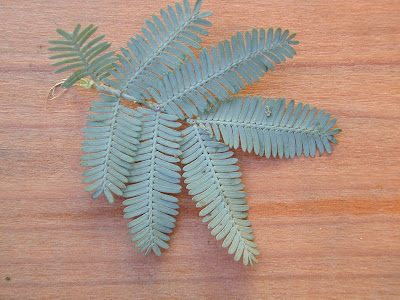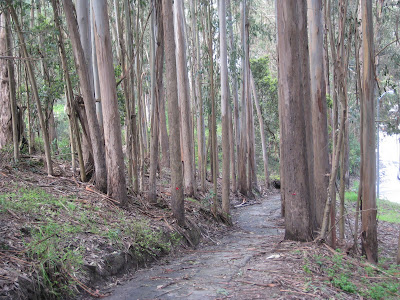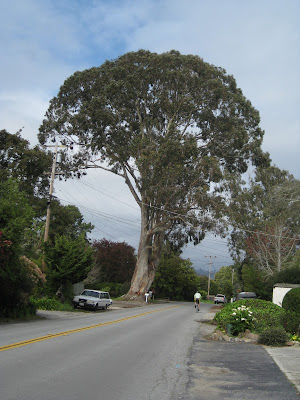Can there be a tree with a greater impact on our small county than the Blue Gum? Can you visualize the horizon without these huge trees?
This tree was going to bring so much to California. It did of course, but not all good. Imported from Australia for lumber mostly, it has taken over huge areas of our native landscapes, and many other species are still being planted today. For an interesting history be sure to look into Matt Ritter's book
A Californian's Guide to the Trees among Us. He is the Eucalyptus expert. I attended a workshop of his at UCSC and he told us the first seed or trees were brought to Cordelia Junction in Fairfield by a ship captain and they are still there.
The trees lined the El Camino Real in Burlingame near where I grew up. They were huge then, messy but very impressive. The trunks look great when wet and they always smelled wonderful.
It is hard to image what our coast would look like without this tree. Actually, for some interesting pictures see the little white church in Soquel. This is the grove leaving Capitola towards Aptos.
It is interesting to note that its not easy to fine a single specimen as they usually grow in groves. This is the same planting but on the walking trail. Very dense, nothing else grows there, which is why many consider this tree an invasive weed.
There are not many tress that can grow so close to the coast, or as far inland with seemingly the same success. If you go up north into San Mateo County just across from Dunes Beach there is a grove that is wind stunted but thriving.
This specimen is located in Clubhouse Dr in RDM. I talked tot he owner about this one, he said he wanted to take it out but the bid was over $6K. (Gone)
The blue gum grows very fast and will reach anywhere from 50-150' with a spread of about 35-50'. Very upright in habit, eventually forming a somewhat rounded crown. Huge upright lateral branches support lots of foliage. This one is on RDM blvd just past the railroad tracks heading towards the beach. (On its way to being gone 5/24.)
The foliage of
Eucalyptus is of two forms, a juvenile form and an adult form. The juvenile form only shows up early or when the tree has been cut back hard or damaged by fire. It does not last long and is replaced by the typical form. Notice the leaves are opposite in this form, covered with a waxy bloom and sessile (no petiole). Generally ovate shaped.
The adult foliage is alternate, simple, sometimes lanceolate but generally falcate-shaped (sickle-like) 6-12" long x 1 -1.5" wide, leathery, pendulous off the branchlets, dark green or almost bluish green in color and similar on both surfaces, Margins are entire, tip pointed.
Flowers mostly in January here but bloom time can continue for a long time. Individual flowers are white, mostly solitary and quite showy. Look at the following image, the buds are 4 sided, and they have a "cap" that falls off. The "cap" is called the operculum, and is really the modified sepals and petals of the flower. (This operculum is often used to identify eucs as they are not easy to id.) The showy part of the flower are the stamens.
The fruit are large 4 sided woody capsules. They are produced in large quantities and are big enough to be a nuisance or a hazard. The capsules split open to release tiny seeds.
The branches and trunks are massive. They have beautiful exfoliating bark. The bark sheds in long strips that either get hung up in the branches or falls and you have to clean it up. Seems to shed all year. Notice how the bark twists up the trunk. The bark gets caught in the branch crotches in large trees and hangs for a long time.
There are a few examples of the compact cultivar 'Compacta', one in the shopping center along East Cliff Dr between 14th and 17th. Also along Highway 1 backing up to the old sash mill area. This one is in the Seacliff area.
There are not many pests of Eucalyptus, the Red Gum Lerp psyllid is one of the worst insect problems.
Mistaken identity? Not likely with the large sickle shaped leaves and the large single capsule.
Locations:
Is there anywhere they are not? Are there many other trees that can live this close to the coast and get so large?
























































